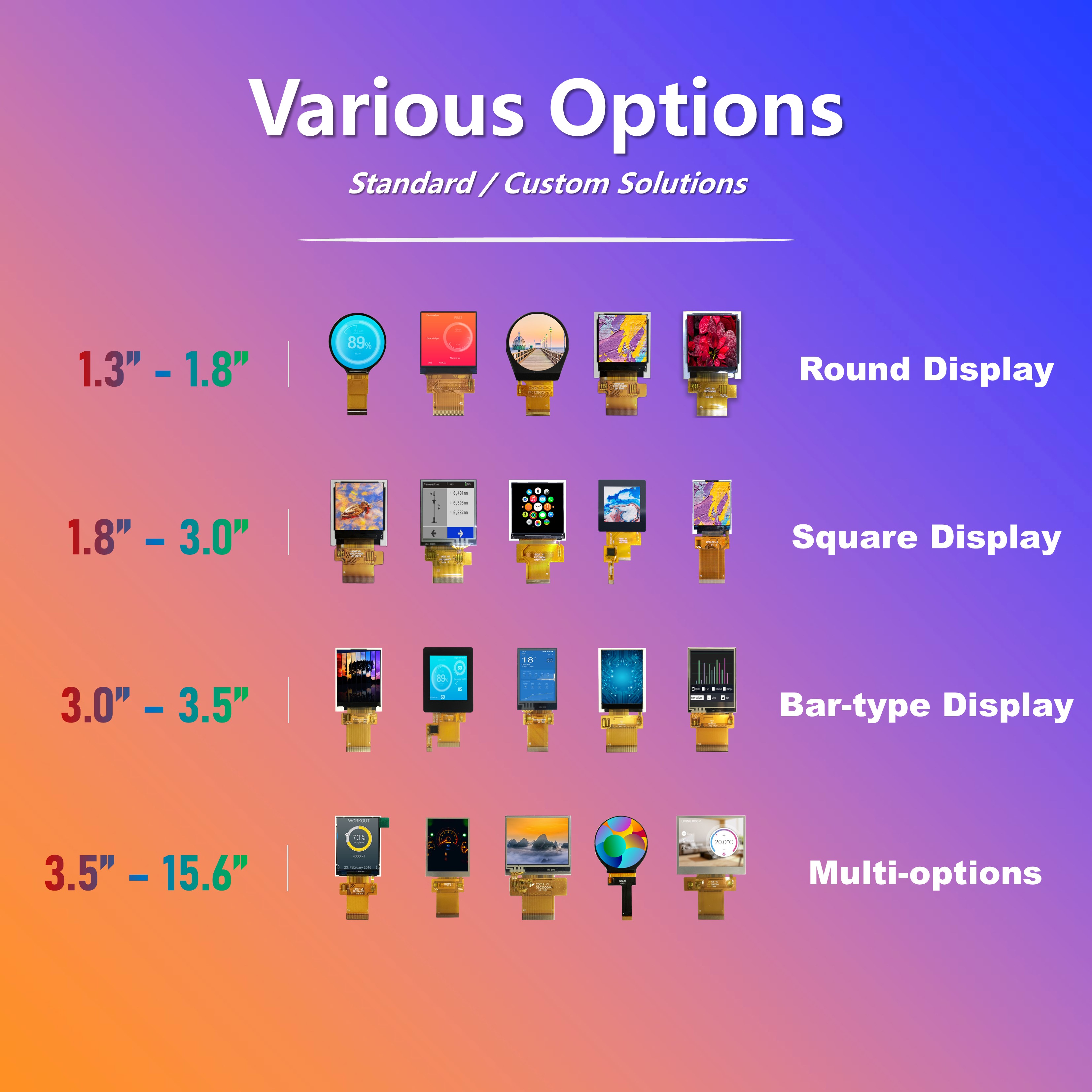LCD Knowledges
LCD Display Screen Buying Guide: How to Choose the Right Display for Your Needs
In today's digital age, LCD display screens have become an integral part of our lives, playing important roles in home entertainment, commercial applications, and educational environments. However, with the variety of LCD display screens available on the market, choosing the right one for your needs can be a daunting task. In this article, we'll provide you with a LCD display screen buying guide to help you make an informed decision.
1. Determine Usage and Environment
Firstly, you need to determine the primary usage and environment for the LCD display screen you're purchasing. Will it be used for home entertainment, commercial displays, or educational purposes? Different usages and environments may require different types and specifications of display screens.
Technical Explanation: When determining usage and environment, engineers need to consider factors such as ambient lighting conditions, frequency of use, and duration of operation. For example, outdoor displays require higher brightness levels and weatherproofing to ensure optimal performance in challenging environments.
For outdoor environments, consider displays with high brightness levels (measured in nits) of at least 1000 nits or more to ensure visibility in bright sunlight. Additionally, look for displays with weatherproofing features such as IP65 or higher ratings to protect against dust, moisture, and extreme temperatures.
2. Select the Right Size and Resolution
Based on your usage and environment, selecting the appropriate display screen size and resolution is crucial. For home entertainment and commercial displays, larger sizes and higher resolutions are typically preferred to achieve better visual effects and viewing experiences. In educational and office settings, emphasis may be placed on clarity and readability.
Technical Explanation: Resolution refers to the density of pixels on the display screen, usually expressed as width × height pixels. Higher resolutions provide clearer images and text. Engineers need to consider the relationship between screen size and resolution; excessively large sizes may result in blurry images at lower resolutions, while excessively small sizes may compromise the viewing experience.
For home entertainment and commercial displays, consider displays with Full HD (1920×1080) resolution or higher for crisp and detailed images. Larger screen sizes, such as 55 inches or more, are suitable for immersive viewing experiences in living rooms or public spaces.
3. Consider Features and Functionality
In addition to basic display functions, modern LCD display screens often come with various additional features and functionalities such as touchscreens, brightness adjustment, multimedia playback, and network connectivity. Depending on your requirements, choose a display screen with the appropriate features and functionalities to meet your practical needs.
Technical Explanation: Selecting display screen features and functionalities requires a comprehensive consideration of user requirements, usage scenarios, and cost considerations. For example, outdoor displays may require features such as waterproofing, high brightness, and temperature resistance.
For interactive applications such as digital signage or interactive kiosks, consider displays with touchscreen capabilities, such as capacitive or infrared touch technology, for intuitive user interactions. Additionally, look for displays with built-in media players and network connectivity options for easy content management and remote monitoring.
4. Evaluate Brand Reputation and Quality
When selecting LCD display screens, brand reputation and quality are important factors to consider. Choosing reputable brands with good reputations ensures product quality and reliable after-sales service, avoiding the pitfalls of purchasing inferior products.
Technical Explanation: Engineers need to assess the quality and reliability of LCD display screens comprehensively, including panel quality, driver circuitry, and housing materials. Conducting on-site inspections and testing of product samples can provide a more accurate assessment of product quality and performance.
Look for displays from well-established brands known for their expertise in display technology, such as Samsung, LG, or Sony. Check customer reviews and industry certifications to ensure product quality and reliability. Additionally, consider factors such as warranty coverage and technical support services offered by the manufacturer.
5. Budgeting and Price Comparison
Finally, based on your budget and financial capabilities, select LCD display screen products with the best cost-performance ratio. Before making a purchase, it's advisable to compare prices and performance evaluations of different brands and models on the market to ensure you get the best deal.
Technical Explanation: Prices are typically correlated with brand, specifications, and features of LCD display screens. Engineers need to consider user requirements and budget constraints to select products with the best cost-performance ratio, avoiding overpriced or underperforming products.
Compare prices from multiple vendors and consider factors such as total cost of ownership, including installation, maintenance, and operational expenses, to determine the most cost-effective option. Additionally, look for promotions, discounts, and bundle deals to maximize savings without compromising on quality.
Conclusion
In conclusion, choosing the right LCD display screen for your needs requires careful consideration of various technical specifications, features, and budget constraints. By following the guidelines outlined in this buying guide and consulting with industry experts, you can make an informed decision and select a display screen that meets your requirements and expectations.
We hope the above content is helpful to you. If you have any questions or need further assistance, please feel free to contact us. We are committed to serving you!

RELATED NEWS
CATEGORIES
LATEST NEWS
CONTACT US
Contact: Aaron Liu
Phone: +86-189 6727 9142
Tel: +86-189 6727 9142
Email: metawistek@rgblcd.com
